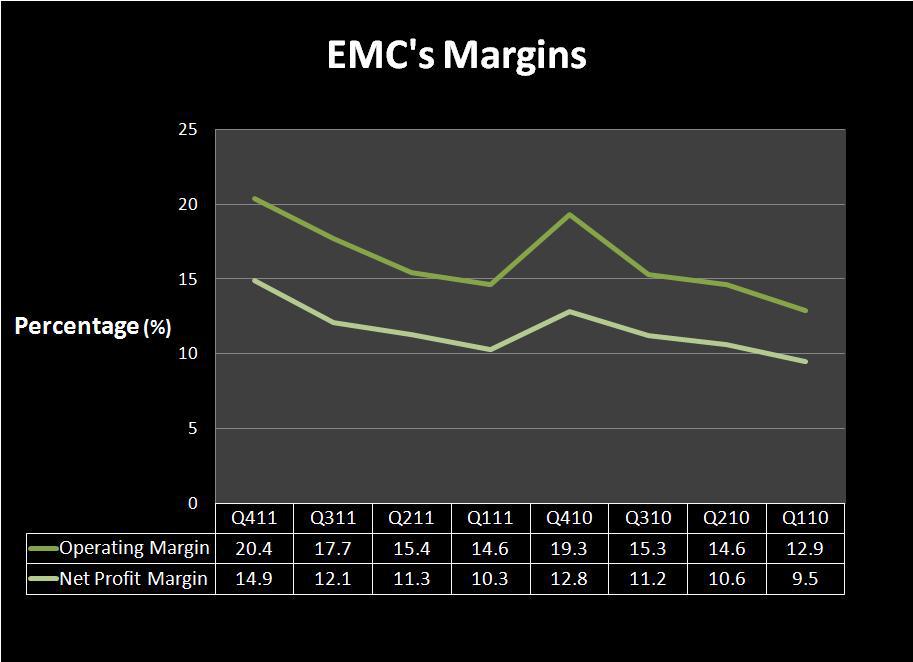Network Management at EMC World 2012
Abstract:
EMC purchase network management vendor SMARTS with their InCharge suite, a number of years ago, rebranding the suite as Ionix. EMC purchased Voyence, rebranding it as NCM (Network Configuration Manager). After EMC World 2012, they completed the acquisition of Watch4Net APG (Advanced Performance Grapher.) The suite of these platforms is now being rolled into a single new brand called EMC IT Operations Intelligence. EMC World 2012 was poised to advertize the new branding in a significant way.
Result:
EMC World 2012 in Las Vegas, Nevada was unfortunately pretty uneventful for service providers. Why was it uneventful?
The labs for EMC IT Operations Intelligence did not function. There were a lot of
other labs, which functioned, but not the Network Management labs. EMC World 2012 was a sure "shot-in-the-head" for demonstrating, to service
providers, the benefits of running EMC Network Management tools in a VM.
After 7 days, EMC could not get their IT Operations Intelligence Network Management Suite running in a VMWare VM.
Background:
Small customers may host their network management tools in a VMWare VM. Enterprises will occasionally implement their network management systems on smaller systems, where they know they will get deterministic behavior from the underlying platform.
Service Providers traditionally run their mission critical network management systems on larger UNIX Systems, so as to provide instant scalability (swap in CPU boards) and 99.999 availability (reboot once-a-year, whether they need to or not.)
The platform of choice in the Service Provider market for scalable Network Management platforms has been SPARC Solaris, for decades... clearly, for a reason. This was demonstrated well at EMC World 2012.
The Problem:
Why not host a network management platform in a VMWare infrastructure? Besides, the fact that EMC could not make it happen, after 1 year of preparation, and 7 days of struggling... there are basic logistics.
Network Management is dependent upon ICMP and SNMP. Both of these protocols are "connectionless protocols" - sometimes referred to as "unreliable protocols". Why would a network management platform use "unreliable protocols"?
The IETF understands that network management should always be light (each poll is a single packet, while a TCP protocol requires a 3-way handshake to start the transaction, poll the single packet, then break down with another 3-way handshake. Imagine doing this for thousands of devices every x seconds - not very light-weight, not very smart. A "connection based protocol" will also hide the nature of an unreliable underlying network, which is what a network management platform is supposed to expose - so it can be fixed.
Now stick a network management platform in a VM, where the network connection from the VM (holding an operating system, with a TCP/IP stack), going down through the hypervisor (which is another operating system, with another TCP/IP stack, which is also sharing the resources of that VM with other VM's.) If there is the slightest glitch in the VM or the hypervisor, which may cause the the packets to be queued or dropped - the actual VMWare infrastructure will signal to the Network Management Centers that there is a network problem, in their customer's network!
Politics:
Clearly, someone at EMC does not understand Network Management, nor do they understand Managed Service Providers.
The Network Management Platform MUST BE ROCK SOLID, so the Network Operations Center personnel will NEVER mistake a alerts in their console from a customer's managed device as a local performance issue in their VM.
With EMC using Solaris to reach into the Telco Data Centers, EMC later using Cisco to reach into the Telco Data Centers - EMC is done using their partners. VMWare was the platform of choice, to [not] demonstrate their Network Management tools on. Cisco was the [soon to be replaced] platform of choice, since EMC announced they will start building their own servers.
Either someone at EMC is sleeping-at-the-wheel or they need to get a spine to support their customers. Either way, this does not bode well for EMC as a provider of software solutions for service providers.
Business Requirements:
In order for a real service provider to reliably run a real network management system in a virtualized environment:
- The virtualized platform must not insert any overhead.
- All resources provided must be deterministic.
- Patches are installed while the system is live.
- Engagement of patches must be deterministic.
- Patch engagement must be fast.
- Rollback of patches must be deterministic.
- Patch rollback must be fast.
- Availability must be 99.999.
Solutions:
There are many platforms which fulfill these basic business requirements, but none of them are VMWare. Ironically, only SPARC Solaris platform is currently supported by EMC for IT Operations Intelligence, EMC does not support SPARC Solaris under VMWare, and EMC chose not to demonstrate their Network Management suite under a platform which meets service provider requirements.
Today, Zones is about the only virtualized technology which offers 0%-overhead virtualizataion. (Actually, on SMP systems, virtualizing via Zones can increase application throughput, if Zones are partitioned by CPU board.) Zones, to work in this environment, seem to work best with external storage providers, like EMC.
Any platform which offers 0% virtualization penalty with ZFS support can easily meet service providers technical platform business requirements. Of these, the top 3 are probably the best supported by commercial interests
- Oracle SPARC Solaris
- Oracle Intel Solaris
- Joyent SMART OS
- OpenIndiana
- Illumian
- BeleniX
- SchilliX
- StormOS
Conclusion:
Today's market is becoming more proprietary each passing day. The movement towards supporting applications only under proprietary solutions (such as VMWare) has demonstrated it's risk during EMC World 2012. A network management provider would not be well advised to use any network management tool which is bound to a single proprietary platform element and does not support POSIX platforms.












